Making Space Groove
Picture this: You’re stomping your way down your lane, not a care in the world, when a sudden stroke of brilliance hits you. League needs a baby skin line.
Your imagination starts cranking on all cylinders. Baby Elise will fall from the sky on an adorable baby mobile. Maokai’s saplings are teddy bears. Sett screams like an infant on an airplane when he casts Haymaker.
Many truly brilliant ideas for skin thematics—including all champions are now babies—never get made. But that doesn’t stop Rioters from constantly dreaming up nutty concepts and trying to get them into the game we love so much. And at Riot, there’s always a chance. Even Rioters in roles that aren’t part of the creative discipline have the opportunity to bring their ideas to the Rift.
Pitch One, Pitch All
We have a process called the Thematic Pitch Quarterly: Every quarter, Rioters are given the opportunity to pitch their skin thematic ideas and potentially have them brought to life by League’s Personalization, Immersion, and Expression team—also known as PIE, or simply the skins team.
The PIE team is brimming with creative ideas themselves, but the core idea behind TPQ is that great ideas can come from anywhere. So the team decided to open up the thematic ideation process to all Rioters, regardless of what team they’re on.
“The vast majority of the skins that we put out these days have gone through TPQ, whether that came from an idea from someone on the PIE team that went through the process, or someone from a different regional office or another team at Riot,” says Ambrielle “Eggo McLego” Army, former product lead for the PIE team. “We're all, in some ways, limited by our own experiences and the things that we have consumed in media or art or fashion or whatever inspires us. So TPQ lets us open up the floodgates to way more experiences and perspectives across Riot than we have just on our team.”
Karl "RiotLoveStrut" Abad, former thematic development producer, points to an ecological concept called “edge effects” as an inspiration for TPQ. It’s essentially what happens at the intersection of multiple habitats, when different organisms and environments collide.
“We wanted to see what happened when we intersected PIE with a regional team in China or someone working on Player Support or QA. And then we'll just have more diversity of ideas.” Riot LoveStrut says. “Luckily, it paid off because I couldn't think of any of these things that people are coming up with around the company.”
After initial pitches are made, the thematic development team enters the chat and kicks things up a notch (or ten), helping the original pitch team with worldbuilding, narrative design, and concept art. At the end of this process, the pitch team has a fully developed pitch deck.
Then all the pitch team has to do is present it… to the entire company.

After seeing all the ideas during the Riot-wide pitch meeting, Rioters vote on all of the thematic pitches. But just because Rioters love a skin line idea, that doesn’t mean players all over the world necessarily will. The PIE team does its due diligence, looking to surveys and other data for more information on what types of thematics resonate with players, ranging from edgy and dark to lighthearted and goofy to elegant and beautiful.
But the team’s decisions don’t live and die by the data—it’s instead used as an informative tool.
“There will be times when something doesn't test well, but we still just feel that the team has so much passion for it, and that there's something special in this universe that maybe hasn't gotten conveyed yet,” says Eggo McLego. “I think a lot of times those longshots end up really paying off and turning into something special because the team is so excited about them and they just give it everything they have on the art and execution side.”
One of the most difficult parts of the process is whittling down the list of ideas that have been pitched. Ideas can be put on ice for a multitude of reasons. For example, there might already be a similar thematic in the pipeline, the idea might be incompatible with champion readability, or it might not have a feasible technical scope for the time being.
“I think the hardest part is having to be like, I love your idea and your enthusiasm, but not now, and here's why,” says Riot LoveStrut. “And what's great about Riot is no one has been up in arms or has thrown a fit about it. They're very understanding and supportive and just want to bounce back and try again the next go around.”
But the skin lines that do make it through are some of League’s most memorable and popular thematics, including Spirit Blossom, Shan Hai Scrolls, Anima Squad, and so many more.
Which brings us to the disco celebration that is Space Groove, one of the most out-of-this-world thematics to come out of TPQ.
Dialing it up to 11
Enter Oscar “gay lil frog” Vega and Neill “Riot diet chola” Chua. Hailing from the disparate realms of concept art and content production, respectively, gay lil frog and Riot diet chola both pitched similarly groovy, disco-themed aesthetics interwoven with sci-fi vibes.
Neither had pitched before, but the TPQ process opened the door for a collaboration written in the stars. Riot diet chola, a content producer, was looking for a creative outlet within Riot and gay lil frog, a concept artist, had a soft spot for Groovy Zilean and felt like he deserved to be groovier.

The opening slide from Riot diet chola and gay lil frog’s original pitch
“I've always loved retro futurism, especially 60s and mid-century retro futurism. And it just seemed like something that we hadn't done,” says gay lil frog. “At the time, we didn't really have a ton of lighthearted sci-fi skins. All the sci-fi skins were really edgy and dark and robotic. So this felt like a good angle to take sci-fi into a different realm.”
When two or more Rioters pitch similar ideas, they’re combined into a superteam and smash their pitches together, taking the best of each. So gay lil frog and Riot diet chola combined their pitches, working with the thematic development team to build out a presentation deck that they would present at a meeting that all Rioters are invited to attend.
During the thematic development process, one skin concept made everyone’s heads collectively explode: Space Groove Nasus.

“I feel like the Nasus moment was kind of where we started to expand everything like crazy,” says Riot diet chola. “That was the big push that was like, you know what, we're already doing this, might as well just blow everything up to 1000%.”
And so they did. With Space Groove Nasus—a smol pup piloting a big ol’ Chad mech—locked in, the stage was set for peak madness.
Nasus would be leader of the Dog Planet, which of course needed to be populated with dogs. And those dogs obviously needed jobs. The Dog Planet has engineers, field researchers, medics and more.
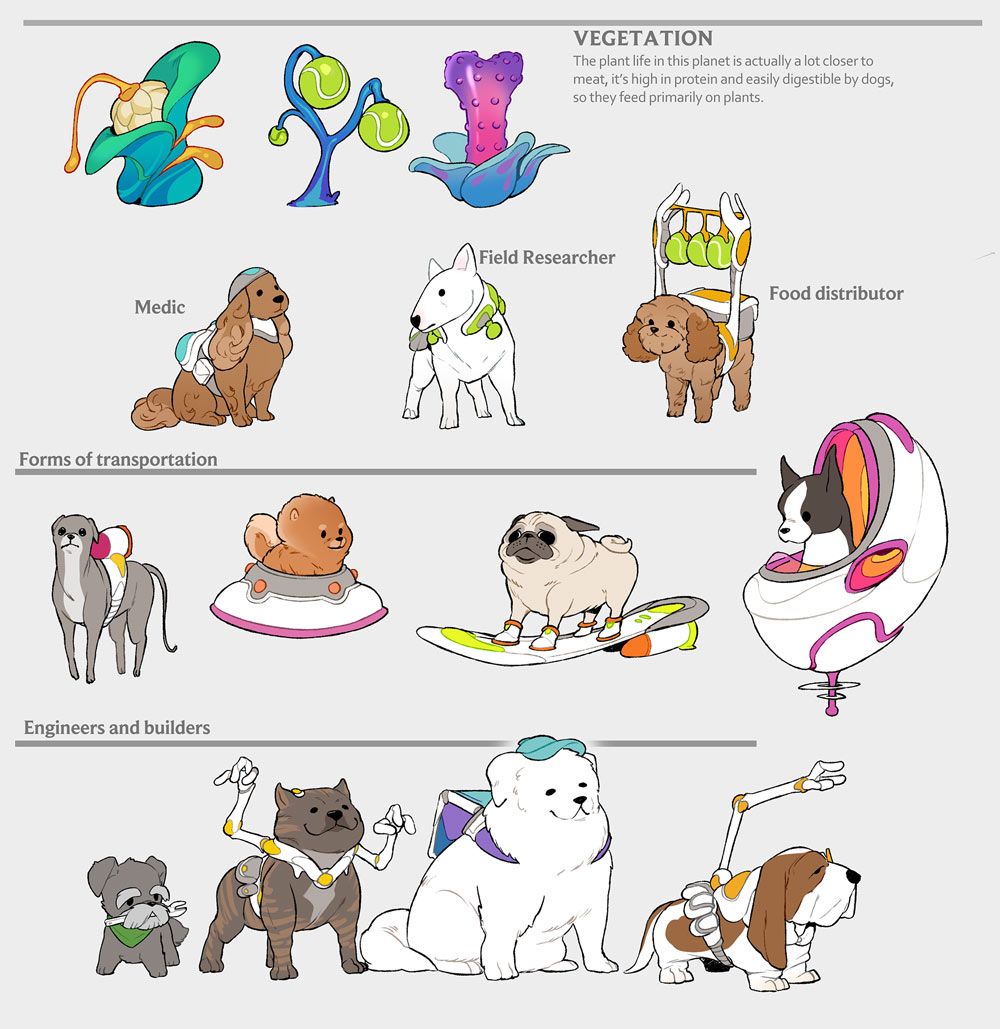
And if there’s a Dog Planet, there must be a Cat Planet, whose fiercest defenders you’ll recognize in Blitzcrank’s legendary skin. Using their powerful mech, Blitz and Crank seek to take over Dog Planet and defeat Nasus in an epic dance battle.
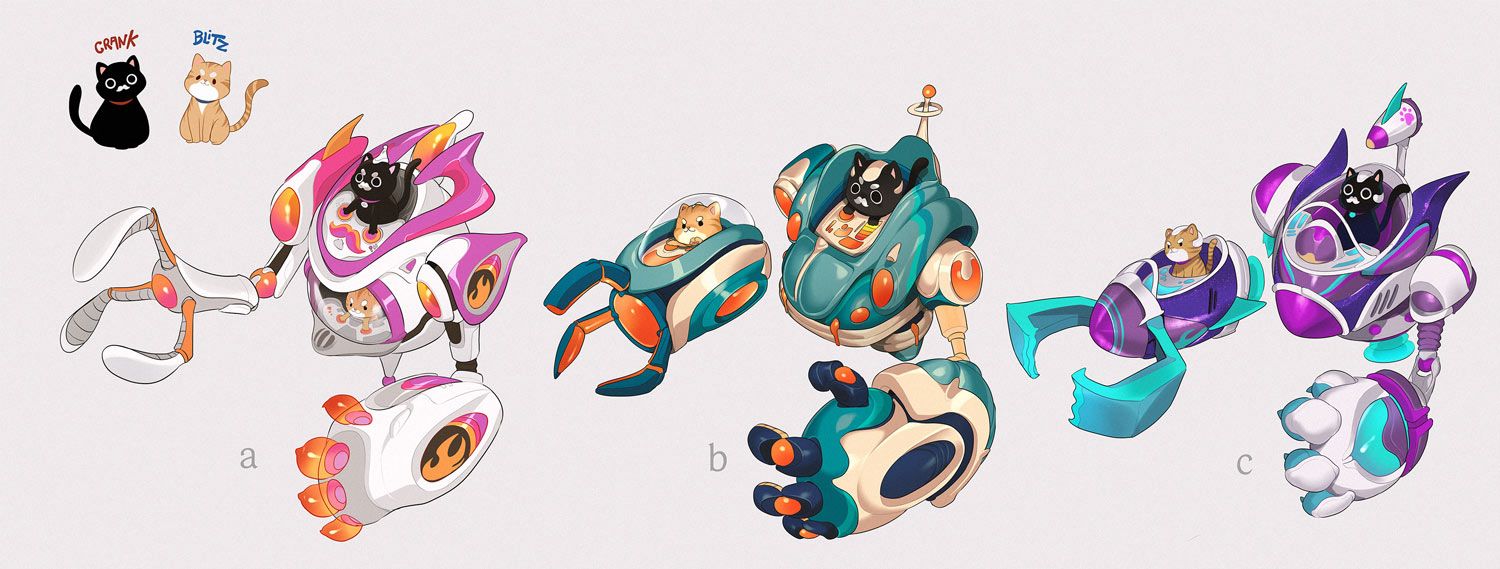
Fun fact: Blitz and Crank are modeled after gay lil frog’s two cats, Wi-Fi and Jon Bovi, both in looks and personality.
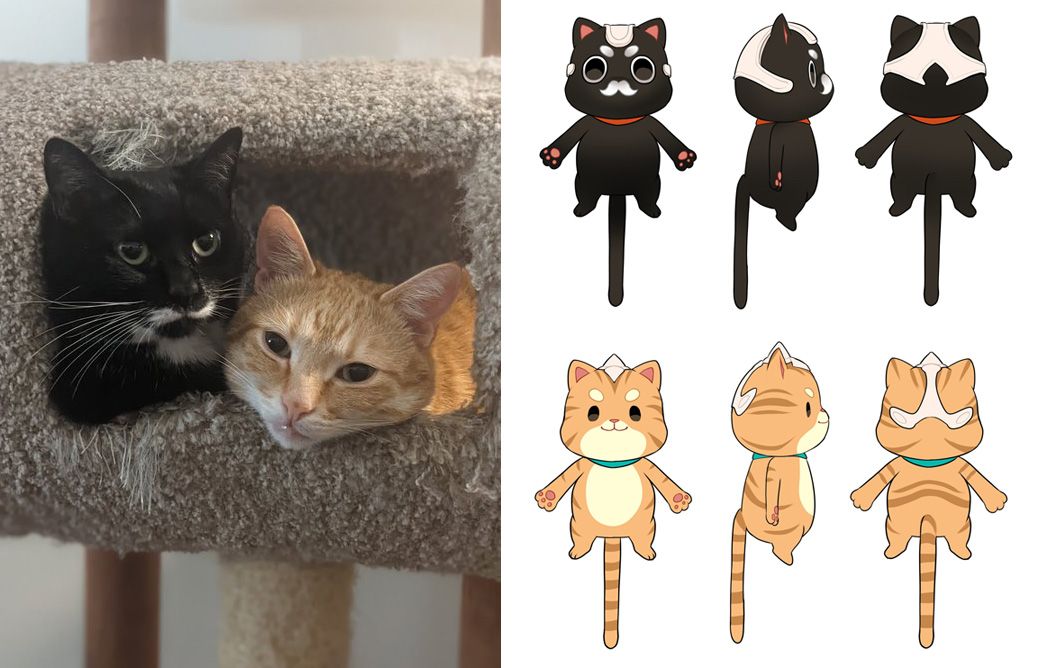
Wi-Fi (left) and Jon Bovi (right) are now immortalized in League.
The team leaned into the soft, bulbous shapes, bright colors, and playful VFX that are now so iconically Space Groove. They also began adding other recurring elements, including the adorable “boogies” that you see in most skins (Samira has Frank and Toofers, Lux has Barney) which brought a fun and bubbly dimension to the universe.
They dreamed up an entire world for the Space Groove characters to inhabit, with heroes, villains, weapons, and even intergalactic vehicles complete with built in dance floors and disco balls.
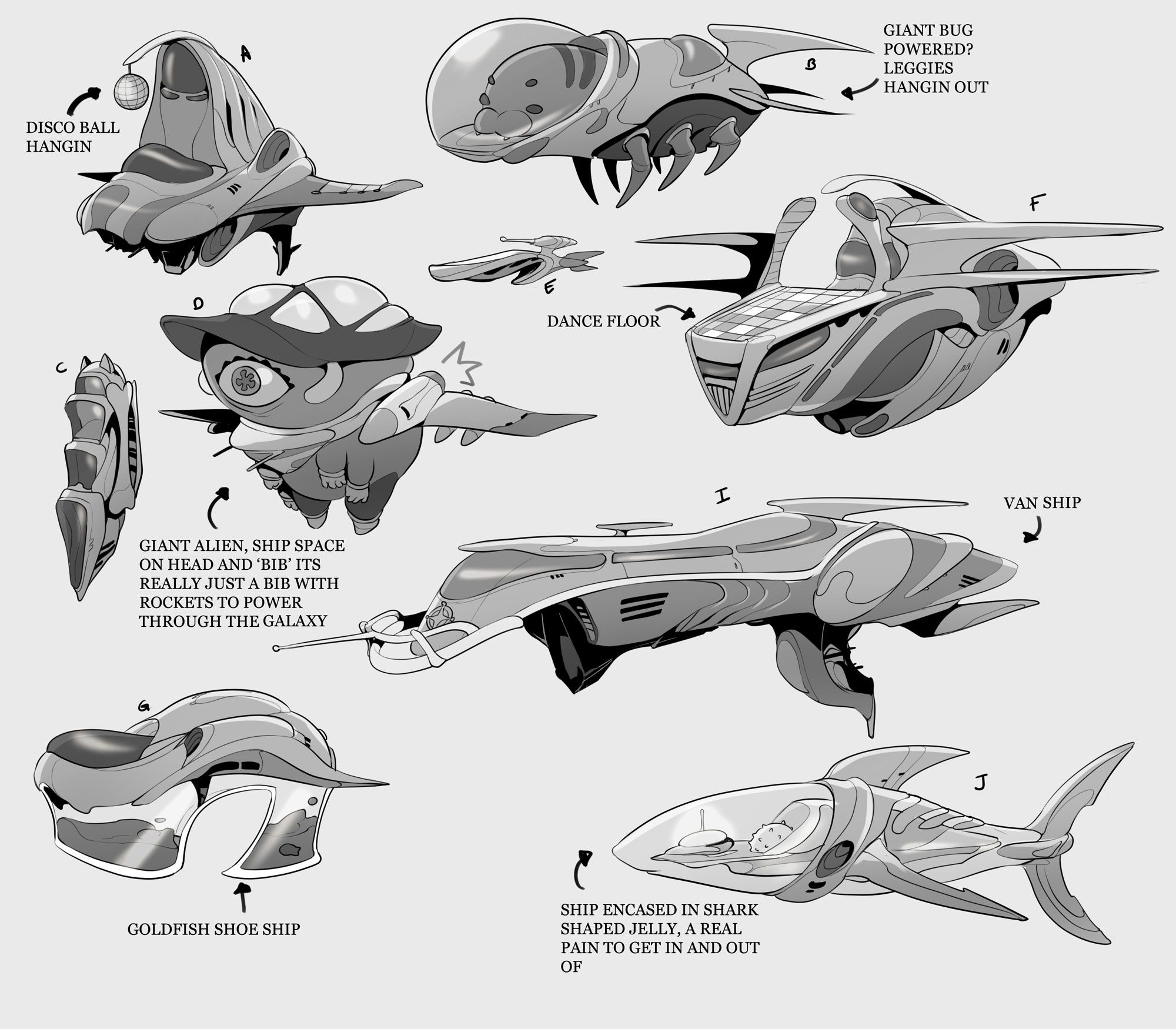
“We didn't leave anything on the table,” says gay lil frog. “Every stupid idea that we had, we were like, yeah, we're doing it. Let's run with it. What I loved about Space Groove was the full commitment that we had with this thematic.”
The thematic development team also needed to nail down Space Groove’s “source of power.” This is a key part of thematic development where the team determines where champions within each universe draw their power from.
…which brings us to “The Groove.”
The Groove
Space Groove’s power source is quite literally the music, AKA The Groove.
This universe runs on music, specifically disco, the tunes that keep evil at bay and good vibes abundant. As you might remember from the Space Groove event last year, it’s The Groove vs. the Harsh Vibes. In the world of Space Groove, villainous Lissandra seeks to spread Harsh Vibes and rid the world of disco.
Essentially, Space Groove would be nothing without music. And who better to infuse some groove than the all-powerful Riot Music team?
“It was all about creating a fun blend of disco and retro sci-fi music,” explains composer Brendon “GravityBW” Williams. “However, the reality was much more complex than that, and it took a lot of work to find the right balance.”
GravityBW found inspiration in the many different eras of disco: 70s disco influences for the horn arranging, string section, and harmony; 80s disco for some of the retro synths and drum sounds; early 2000’s electronic disco for the more EDM-informed approach to the music; and current pop disco for getting a very modern, current-sounding production and mix approach.
“I also took a lot of inspiration from classic sci-fi themes for things like melodies, harmony, and theremin-like melodic synths; classic funk for the middle groove-focused section (I had to find an excuse to finally use slap bass as a Riot composer!); and a number of super fun sci-fi/disco hybrid arrangements that were surprisingly common in the late 70s and early 80s,” he says.
Discussions with the rest of the audio team kicked off far earlier than normal, since music is such a huge part of the Space Groove thematic. GravityBW even locked into an exact tempo for the Space Groove theme early on, so that the animation team could rely on their work syncing with the music. He also incorporated sound effects from the skins team’s audio “building blocks” into the theme. (Listen closely at 3:26 for one of these moments, as the theme transitions into its finale.)
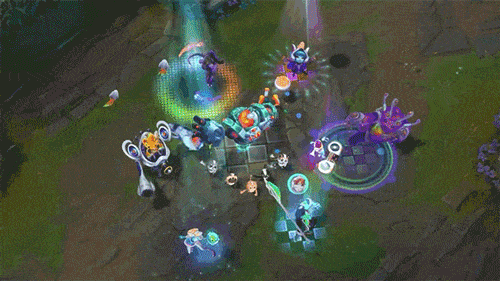
“I was much more in close communication with the sound designers than a typical skin line would require,” GravityBW says. “Before I’d started writing, we had group discussions where we talked about what role music would play and what kind of feel the music would have.”
GravityBW loved the lightheartedness of Space Groove, and how unique it felt in the world of League of Legends.
“Writing the music for Space Groove was an especially great experience because the skinline doesn’t take itself seriously,” he recalls. “For me this was great because I didn’t have to worry too much about things getting cheesy or overly silly, which would normally not be desirable for League.”
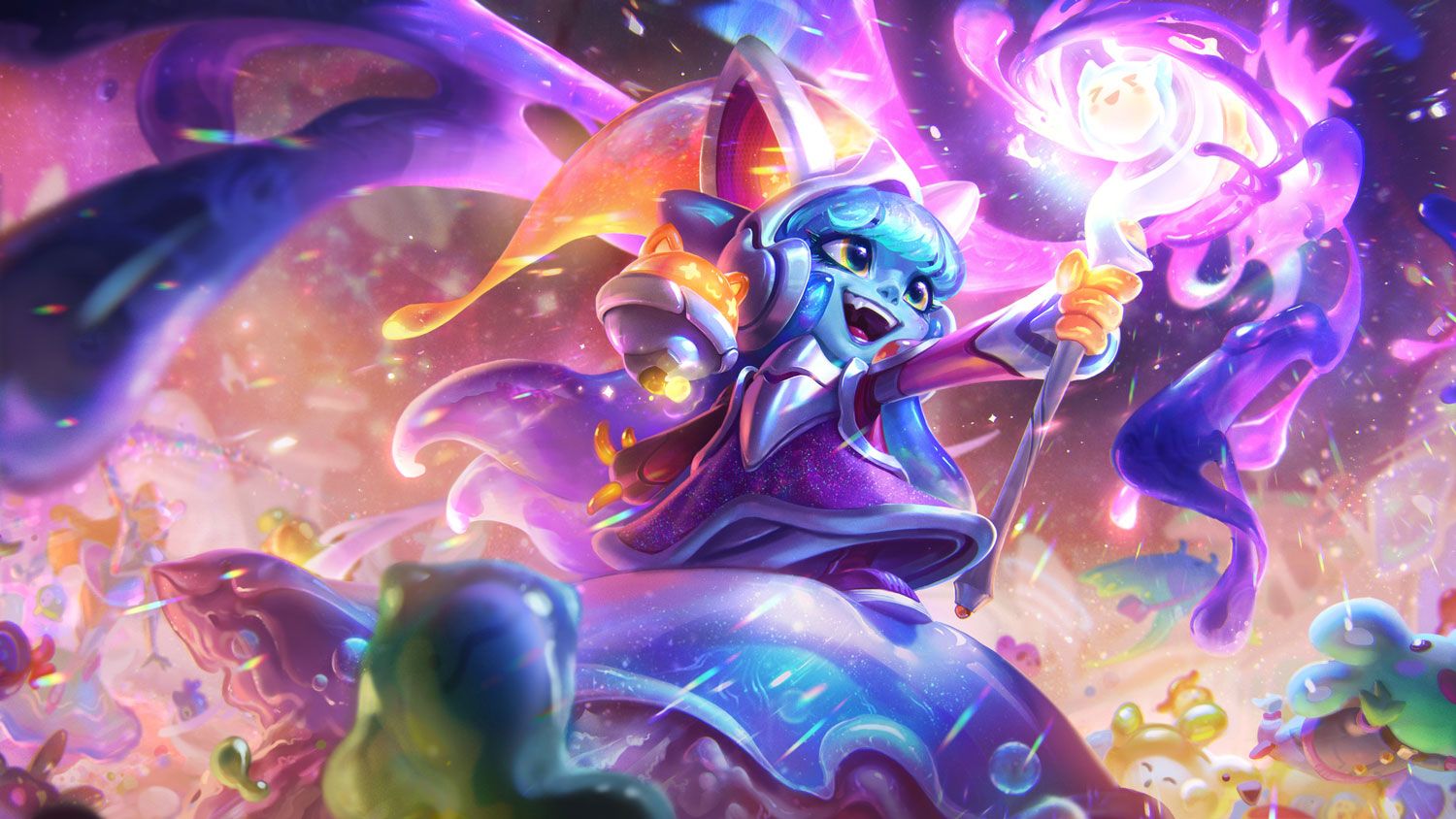
Ultimately, one Rioter’s pipe dream can become a long-lasting thematic—and a flood of new inspiration for creative teams at Riot.
“The Space Groove pitch was so crazy. Watching the devs have fun with it was almost like the best part of the pitch. They would take an idea and immediately they would have like 1000 different ideas on how to execute it,” says gay lil frog. “They were just so excited to make it happen. And that was one of the best parts of Space Groove is that it ended up being a really re-energizing thematic for the team. I think at that point, we had been doing a lot of really serious, really edgy thematics, and this one was just like a breath of fresh air. The stupider the better, go to town—anything you want to do, go for it.”
And the groove continues with new skins this month. Let’s just say you’ll be seeing a key villain (and a hero with plenty of boogies to fight off said villain’s harsh vibes) arrive on the scene very soon.



